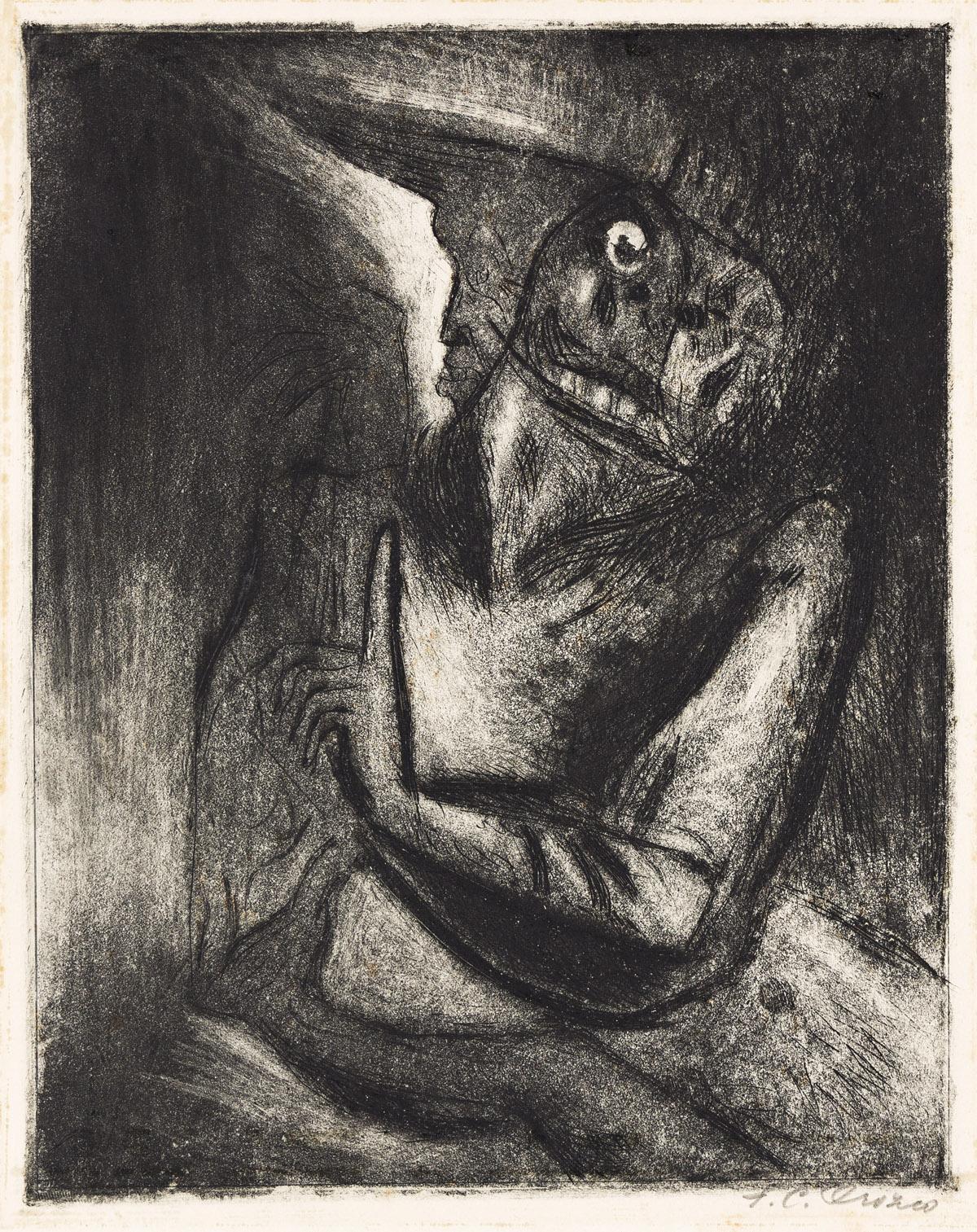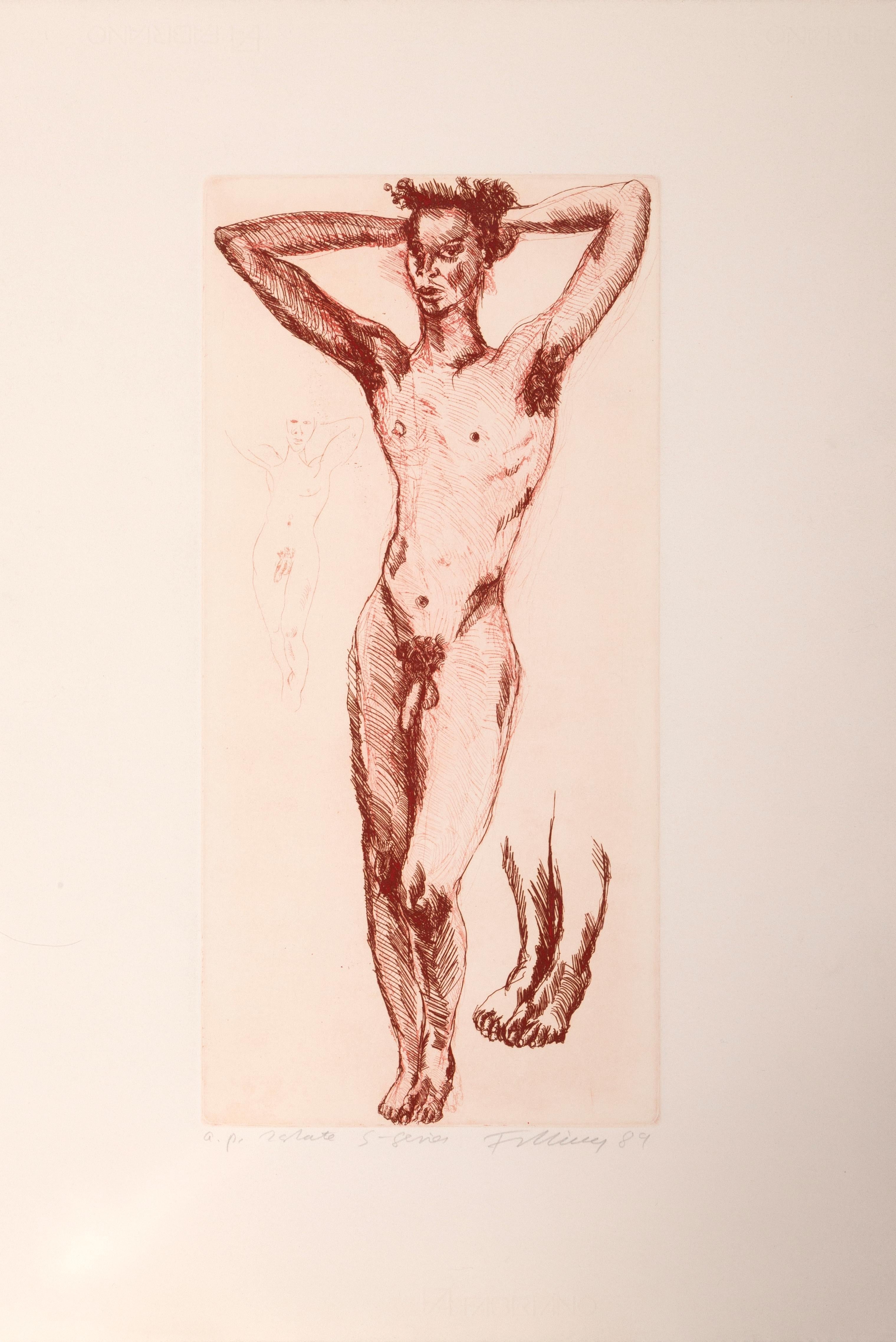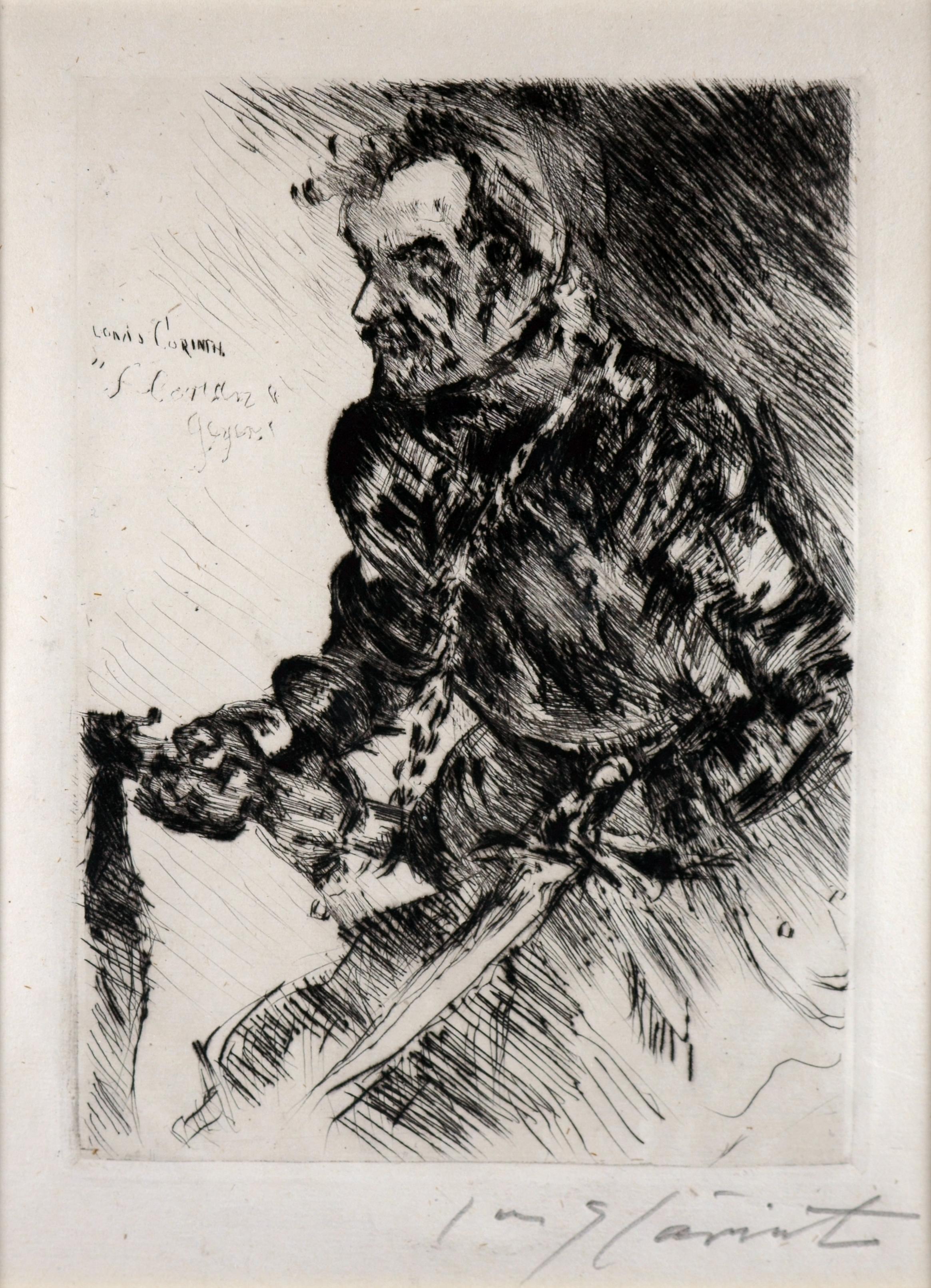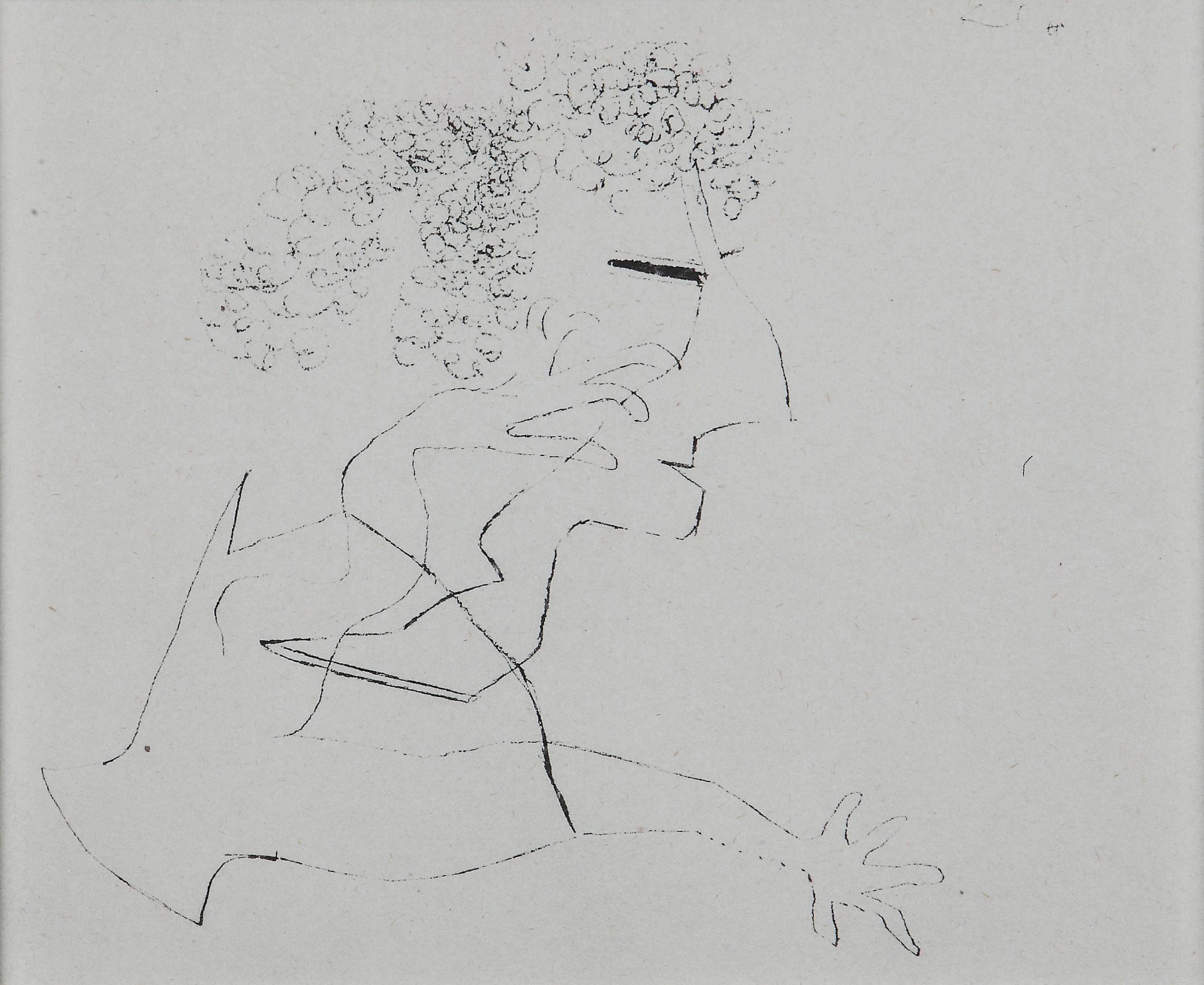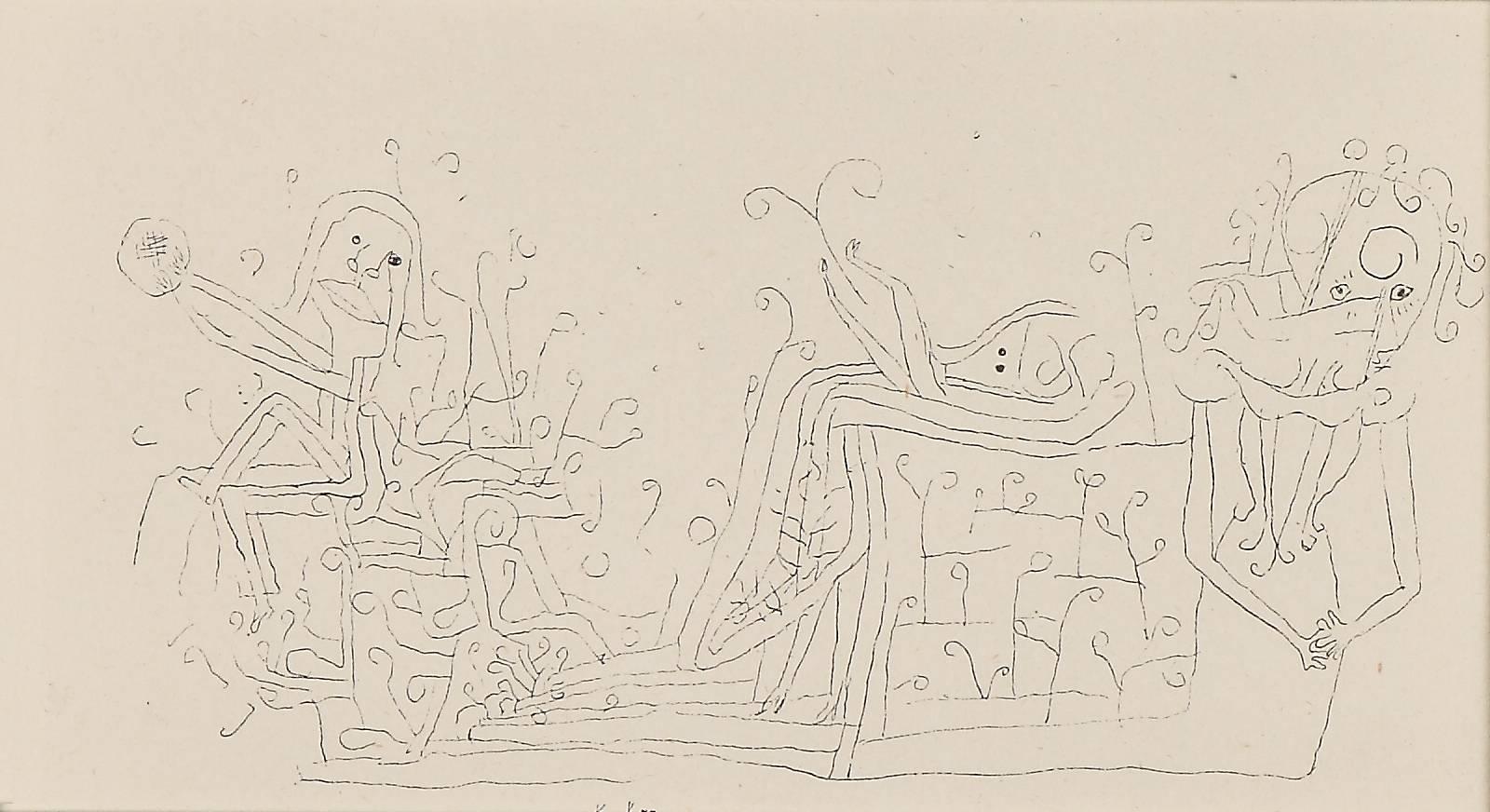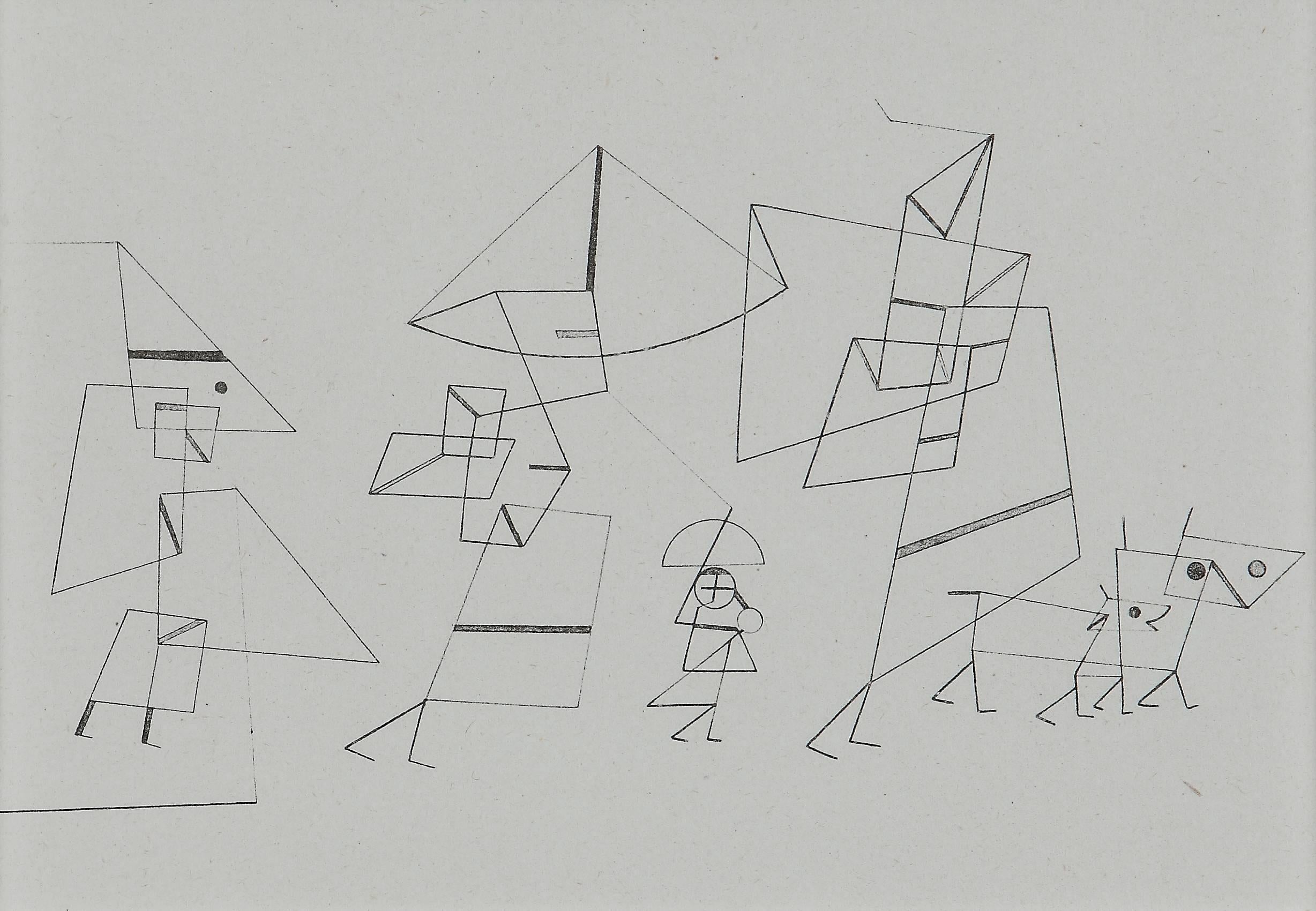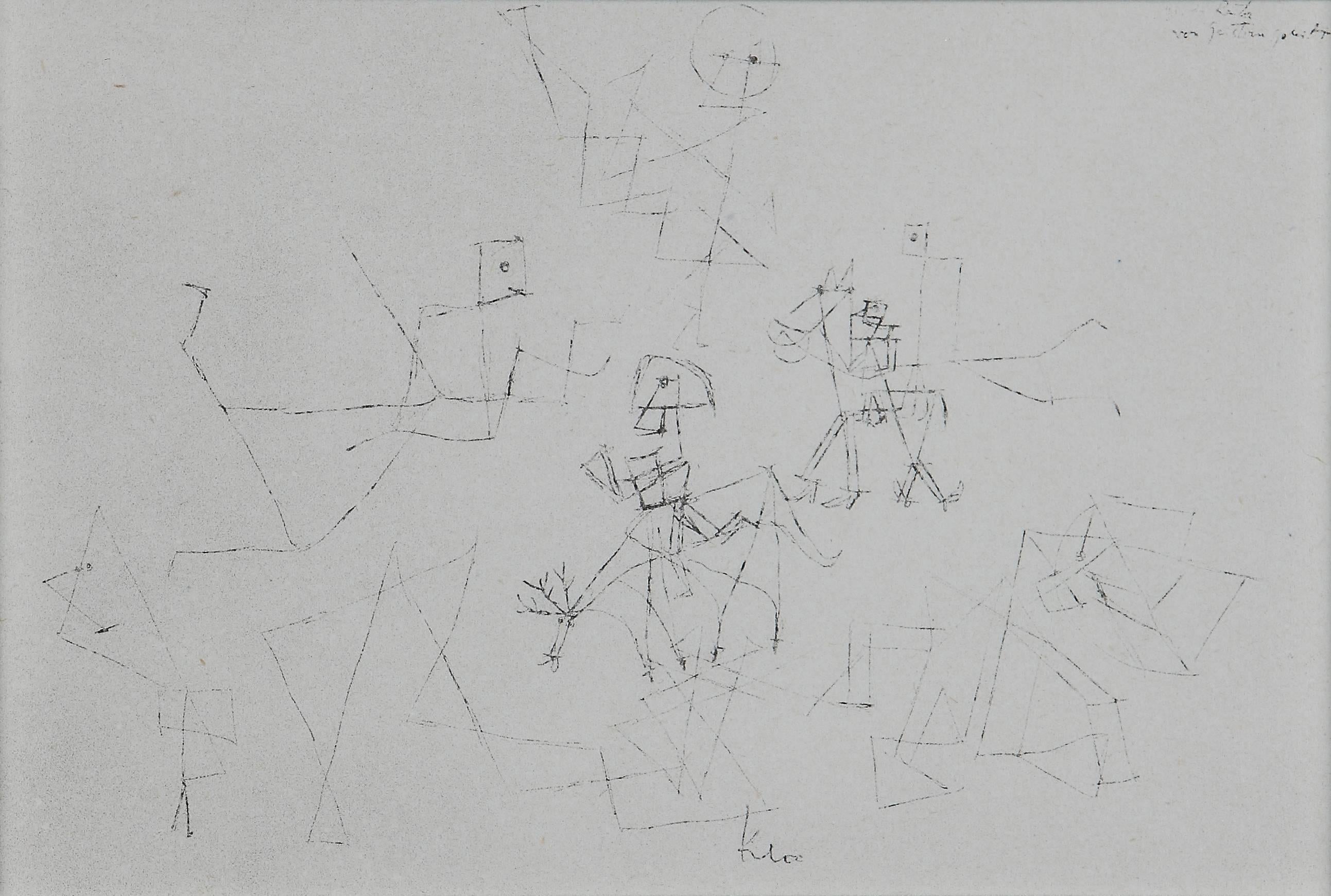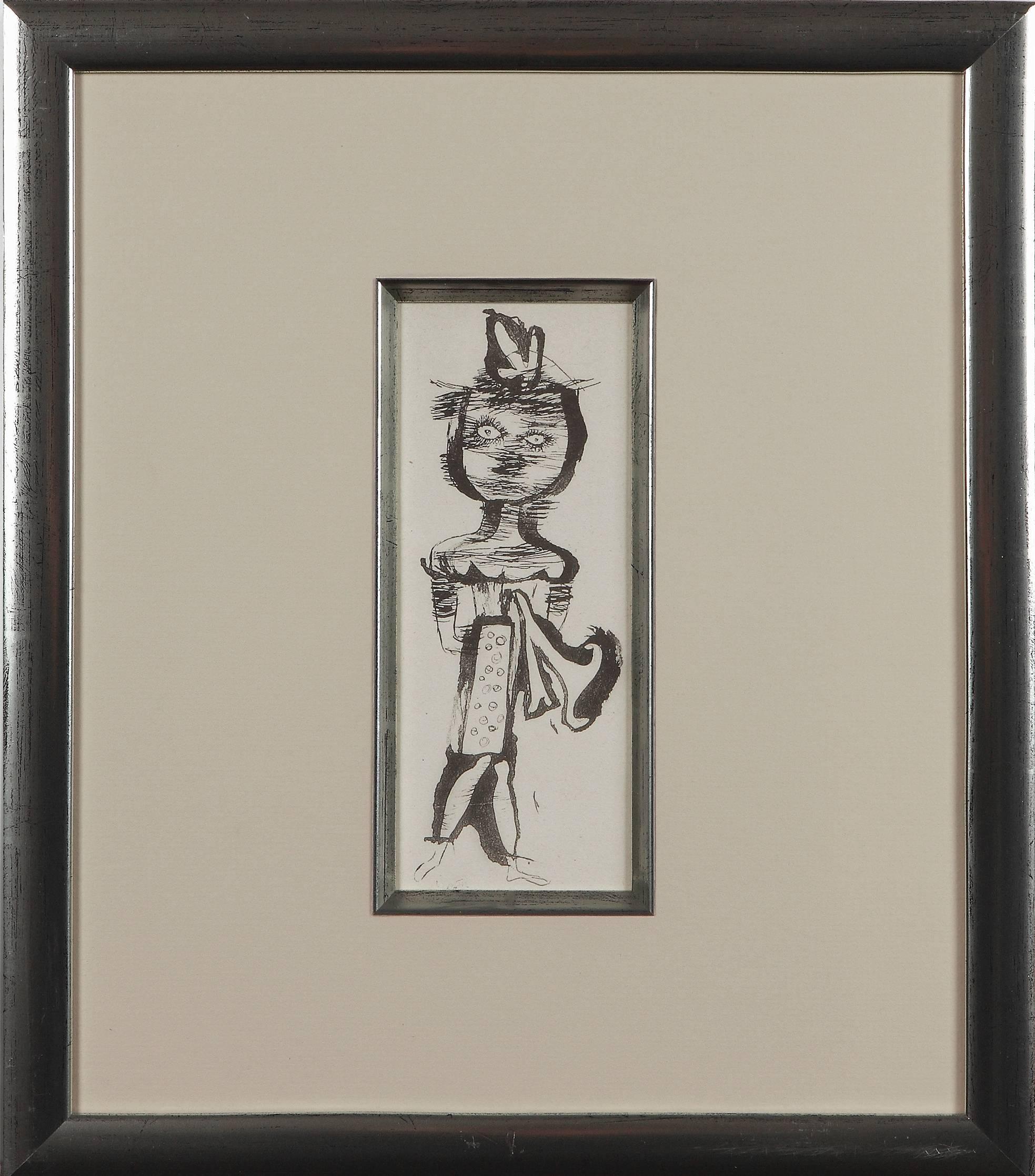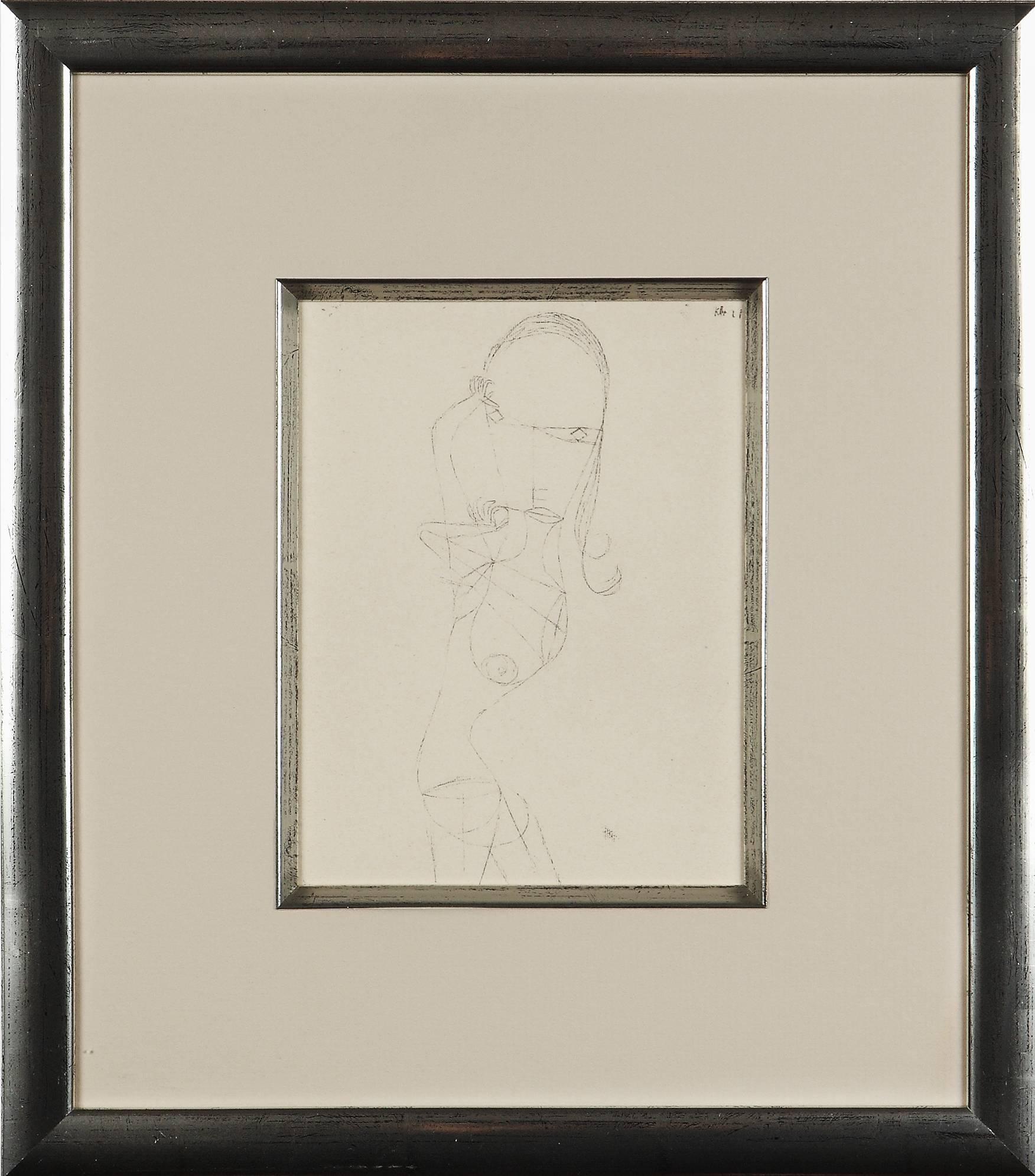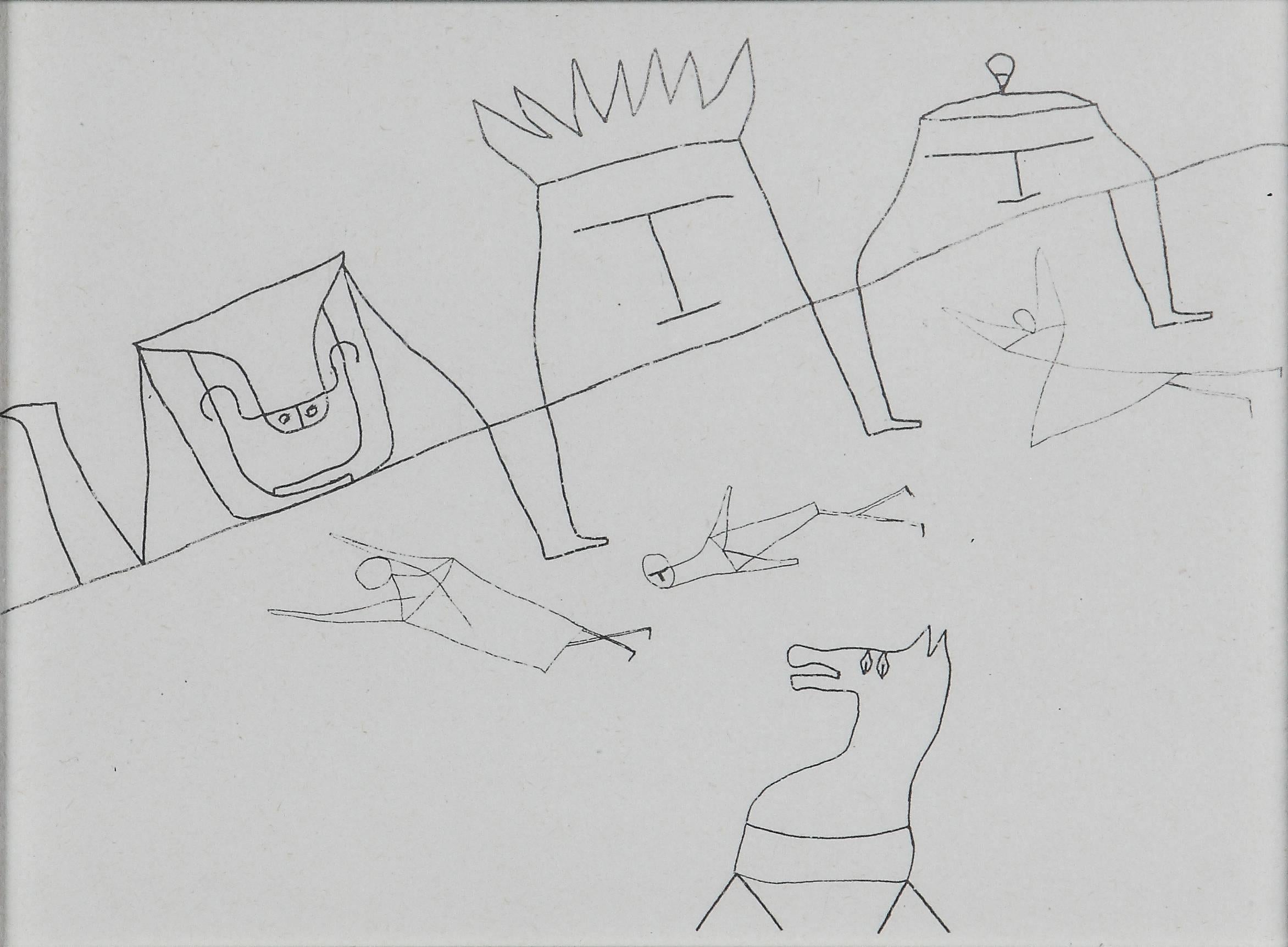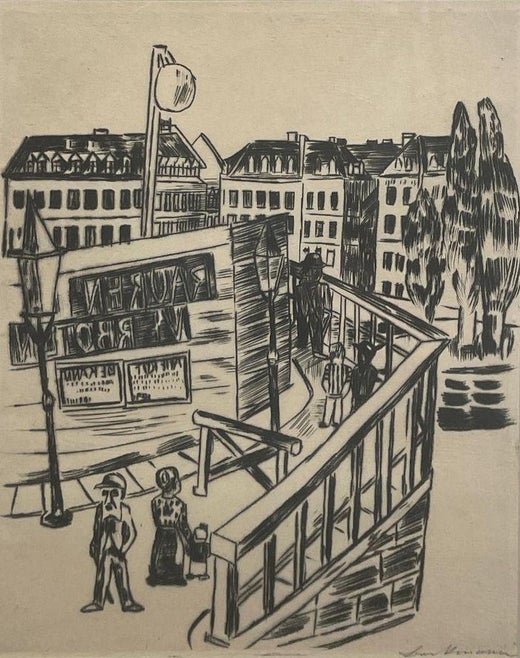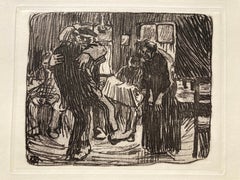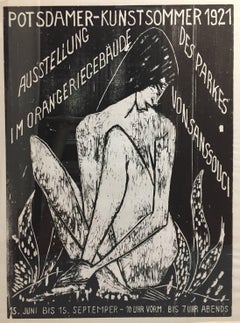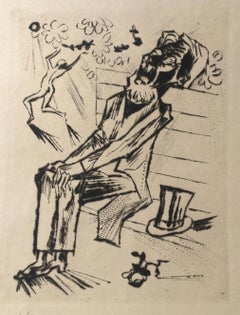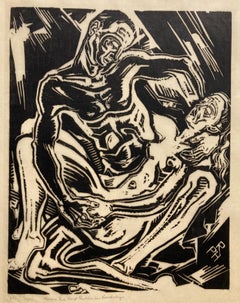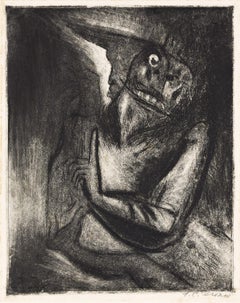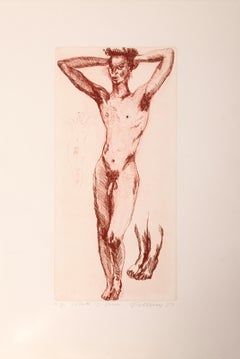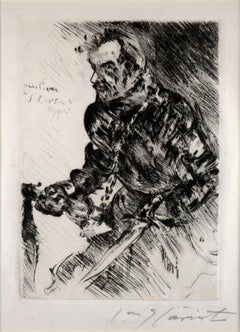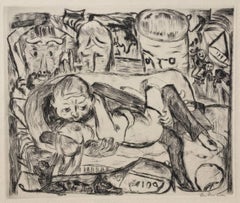
LIEBESPAAR II - (LOVERS)
View Similar Items
Want more images or videos?
Request additional images or videos from the seller
1 of 6
Max BeckmannLIEBESPAAR II - (LOVERS)1918
1918
About the Item
- Creator:Max Beckmann (1884-1950, German)
- Creation Year:1918
- Dimensions:Height: 8.625 in (21.91 cm)Width: 10.25 in (26.04 cm)
- Medium:
- Movement & Style:
- Period:
- Condition:
- Gallery Location:Santa Monica, CA
- Reference Number:1stDibs: LU41132011663
Max Beckmann
Max Beckmann was one of the most influential artists of the 20th century - both as a painter and as an outstanding graphic artist. Printmaking was the main medium he worked in between 1914 and 1924, creating a total of 156 drypoints, 72 lithographs and 16 woodcuts. From wikipedia: Max Carl Friedrich Beckmann (February 12, 1884 – December 27, 1950) was a German painter, draftsman, printmaker, sculptor, and writer. Although he is classified as an Expressionist artist, he rejected both the term and the movement.[1] In the 1920s, he was associated with the New Objectivity (Neue Sachlichkeit), an outgrowth of Expressionism that opposed its introverted emotionalism. Even when dealing with light subject matter like circus performers, Beckmann often had an undercurrent of moodiness or unease in his works. By the 1930s, his work became more explicit in its horrifying imagery and distorted forms with combination of brutal realism and social criticism, coinciding with the rise of nazism in Germany.
About the Seller
5.0
Recognized Seller
These prestigious sellers are industry leaders and represent the highest echelon for item quality and design.
Gold Seller
Premium sellers maintaining a 4.3+ rating and 24-hour response times
Established in 1977
1stDibs seller since 2016
284 sales on 1stDibs
Typical response time: 2 hours
Associations
International Fine Print Dealers Association
Authenticity Guarantee
In the unlikely event there’s an issue with an item’s authenticity, contact us within 1 year for a full refund. DetailsMoney-Back Guarantee
If your item is not as described, is damaged in transit, or does not arrive, contact us within 7 days for a full refund. Details24-Hour Cancellation
You have a 24-hour grace period in which to reconsider your purchase, with no questions asked.Vetted Professional Sellers
Our world-class sellers must adhere to strict standards for service and quality, maintaining the integrity of our listings.Price-Match Guarantee
If you find that a seller listed the same item for a lower price elsewhere, we’ll match it.Trusted Global Delivery
Our best-in-class carrier network provides specialized shipping options worldwide, including custom delivery.More From This Seller
View AllHAMBURGER KNIEPPE
By Käthe Kollwitz
Located in Santa Monica, CA
KATHE KOLLWITZ (1867-1945)
HAMBURGER KNIEPPE, 1901) (K.58 IIIb)
Soft Ground Etching, Plate 9 ¾ x 8 ¼ sheet 10 ½ x 13 ¾. With the von de Becke blind stamp in the lower right. Prin...
Category
Early 1900s Expressionist Interior Prints
Materials
Etching
LARGE RARE OTTO MUELLER WOODCUT POSTER
By Otto Mueller
Located in Santa Monica, CA
OTTO MUELLER (German 1874 – 1930)
POTSDAMER KUNSTSOMMER, 1921 (1968) (Karsch 6)
Woodcut. Edition of 25 and numbered 11. There are no known
impressio...
Category
1920s Expressionist Figurative Prints
Materials
Woodcut
DER SCHATTEN II - Rich Drypoint - 1st State
By Hermann Max Pechstein
Located in Santa Monica, CA
MAX PECHSTEIN (1881 -1955)
DER SCHATTEN II 1918 (Knupp 79, Fecher 143 I/ii)
Rich drypoint, signed and annotated, FIRST STATE. Image: 8 1/4 x 6 inches on japan paper; 15 x 11 1/4 i...
Category
1910s Expressionist Figurative Prints
Materials
Drypoint
LOVERS (LIEBESPAAR
Located in Santa Monica, CA
ROBERT PHILIPPI (Austrian 1877-1959)
LIEBESPAAR (LOVERS) ca.1923 (in Rifkind Collection, LACMA: From a portfolio of 10 prints. Rifkind indicates the e...
Category
1920s Expressionist Figurative Prints
Materials
Woodcut
KOPF (Head)
By Max Kaus
Located in Santa Monica, CA
MAX KAUS (German 1891-1977)
KOPF (Head( (Rifkind 1387)
Woodcut, unsigned, monogram in block. As issued as plate 1 from “Genius” Zeitschrift für werdende und alte Kunst, vol. 2, no. ...
Category
1920s Expressionist Figurative Prints
Materials
Woodcut
POLSTER (The Cushion)
By Max Kurzweil
Located in Santa Monica, CA
MAXIMILLIAN KURZWEIL (Austrian 1867-1916)
DER POLSTER / THE CUSHION, 1903. Color woodcut printed on laid japon paper, affixed as usual to a support sheet from its upper sheet edge...
Category
Early 1900s Vienna Secession Figurative Prints
Materials
Woodcut
You May Also Like
Demonio II
By Jose Clemente Orozco
Located in New York, NY
A superb, richly-inked impression of this very scarce aquatint. Edition of approximately 80. Signed in pencil by Orozco.
Category
1940s Expressionist Abstract Prints
Materials
Aquatint
Shaun Series, Nude Etching by Rainer Fetting
Located in Long Island City, NY
Shaun Series
Rainer Fetting, German (1949)
Date: 1989
Etching, signed and numbered in pencil
Edition of AP
Image Size: 19.5 x 9.5 inches
Size: 27.5 x 19.5 in. (69.85 x 49.53 cm)
Category
1980s Expressionist Figurative Prints
Materials
Etching
Rudolf v. Rittner as Florian Geyer - Last man standing -
By Lovis Corinth
Located in Berlin, DE
Lovis Corinth (1858 Tapiau - 1925 Zandvoort), Rudolf von Rittner as Florian Geyer, 1924 (Müller 854), drypoint signed in pencil. 20.4 × 14.2 (plate size), 37.7 × 30.6 cm (sheet size). Published by Karl Nierendorf, Berlin. Framed in a passepartout.
- Strong, precise impression. Frame a little bit rubbed and with two small damages.
About the artwork
The knight is a leitmotif in Lovis Corinth's work, culminating in his Self-Portrait in Armour of 1914. Of all the paintings on this theme, Corinth most often depicted Florian Geyer. Descended from a Franconian noble family, he fought for the freedom of the peasants during the peasant wars of the Reformation, first diplomatically and then militarily, leading the legendary Schwarzen Haufen (Black Troops). The name derives from the black uniforms with which Geyer dressed the peasants willing to fight.
During the Napoleonic occupation, the freedom fighter Florian Geyer was sung about by the Romantics, and the free corps Die Schwarze Schaar, founded in 1813 by Major von Lützow, succeeded the Schwarzer Haufen. It was against this historical background that Gerhard Hauptmann wrote the revolutionary drama Florian Geyer, which premiered at the Deutsches Theater in Berlin in 1896. While the actor Rudolf Rittner, who would later appear in Fritz Lang's films, initially played the role of Schäferhans, he took over the leading role in the new production at Berlin's Lessing Theatre in 1904, again directed by Emil Lessing, which established his fame as an actor. Hauptmann himself praised the acting. He wrote to Hugo von Hofmannsthal: "It went quite well with Florian Geyer. In any case, I had the great pleasure of seeing the play again in an admirable performance". And Lovis Corinth was so taken with Rittner's performance that he painted an oil portrait of him in the role of Florian Geyer in 1906.
After two further graphic versions in 1915 and 1920/21, Corinth returned to the painting a year before his death and almost twenty years after the oil painting to create this graphic version in 1924. Even the inscription in the picture was taken over. This proves all the more the importance of the knight and freedom fighter for Corinth's self-image.
The oil painting, in particular, proclaims the single-minded determination to fight to the last for the values defended, manifested in the oil painting by the tattered flag held out to the enemy. There is a parallel with Rainer Maria Rilke's 1899 story The Cornet, in which the protagonist goes down with the flag that he first saved at the risk of his life.
Consequently, the portrait is also a self-portrait, and the knight's armour is not an academic costume or an ironic refraction, but an expression of Corinth's self-image, which also includes his self-representation as an artist. The Secession poster...
Category
1920s Expressionist Figurative Prints
Materials
Etching
$876 Sale Price
20% Off
Clown et Enfant (Clown and Child) From the suite Cirque (Circus)
By Georges Rouault
Located in San Francisco, CA
This artwork titled "Clown et Enfant (Clown and Child)" from the suite "Cirque (Circus) by Andre Suarez" created in 1930, is an original color aquatint, etching and drypoint by renown French artist Georges Rouault, 1871-1958. It is signed in the plate as issue. According to Isabelle Rouault (Daughter of the artist) the total edition was 500. Published by Ambroise Vollard, Paris and printed by Maurice Potin, Paris. Referenced and pictured in the artist's catalogue raisonnes by Rauch #153, Kornfeld, Klipstein Catalog 120, #134 to #144, Soby pages 110 and 120, and Ambroise Vollard Editeur by Una E. Johnson #202 and page #109. . The plate mark (image) is 12.15 x 8.25 inches, framed size is 24.75 x 21 inches. Custom framed in a wooden black and gold frame, with fabric matting, fabric spacer, and gold color bevel. Artwork and frame are in excellent condition, the colors are fresh and bright. Example of this artwork is held in many museums including The Museum of Modern Art, New York
About the artist:
French painter, draughtsman, printmaker and designer, Georges Rouault created a personal style of Expressionism that gives him a highly distinctive place in Modern Art. Rouault was born in 1871, in the cellar of a house in Belleville, a working class quarter of Paris near the Père Lachaise cemetery, while the city was being bombarded by government troops quelling the Paris Commune. His father was a finisher and varnisher of pianos at a local factory. Rouault's grandfather was an amateur art...
Category
Mid-20th Century Expressionist Figurative Prints
Materials
Aquatint
From Les Reincarnations du Pere Ubu, Etching by Georges Rouault 1929
By Georges Rouault
Located in Long Island City, NY
Artist: Georges Rouault, French (1871 - 1958)
Title: Frontispiece from the portfolio Les Reincarnations du Pere Ubu
Year: 1929
Medium: Etching and aquatint on cream wove paper, signe...
Category
1920s Expressionist Figurative Prints
Materials
Etching
Paul Klee Etching "Divergenz Kopf-Hände"
By (after) Paul Klee
Located in Berlin, DE
Helio-etching on hand-made paper, 1929 by Paul Klee. Signatur is printed, top right: Klee
From portfolio Paul Klee, Handzeichnungen 1921-1930; Here no 58
Image: 5.75 x 7.05 in ( 14,6...
Category
Early 20th Century Expressionist Figurative Prints
Materials
Etching
